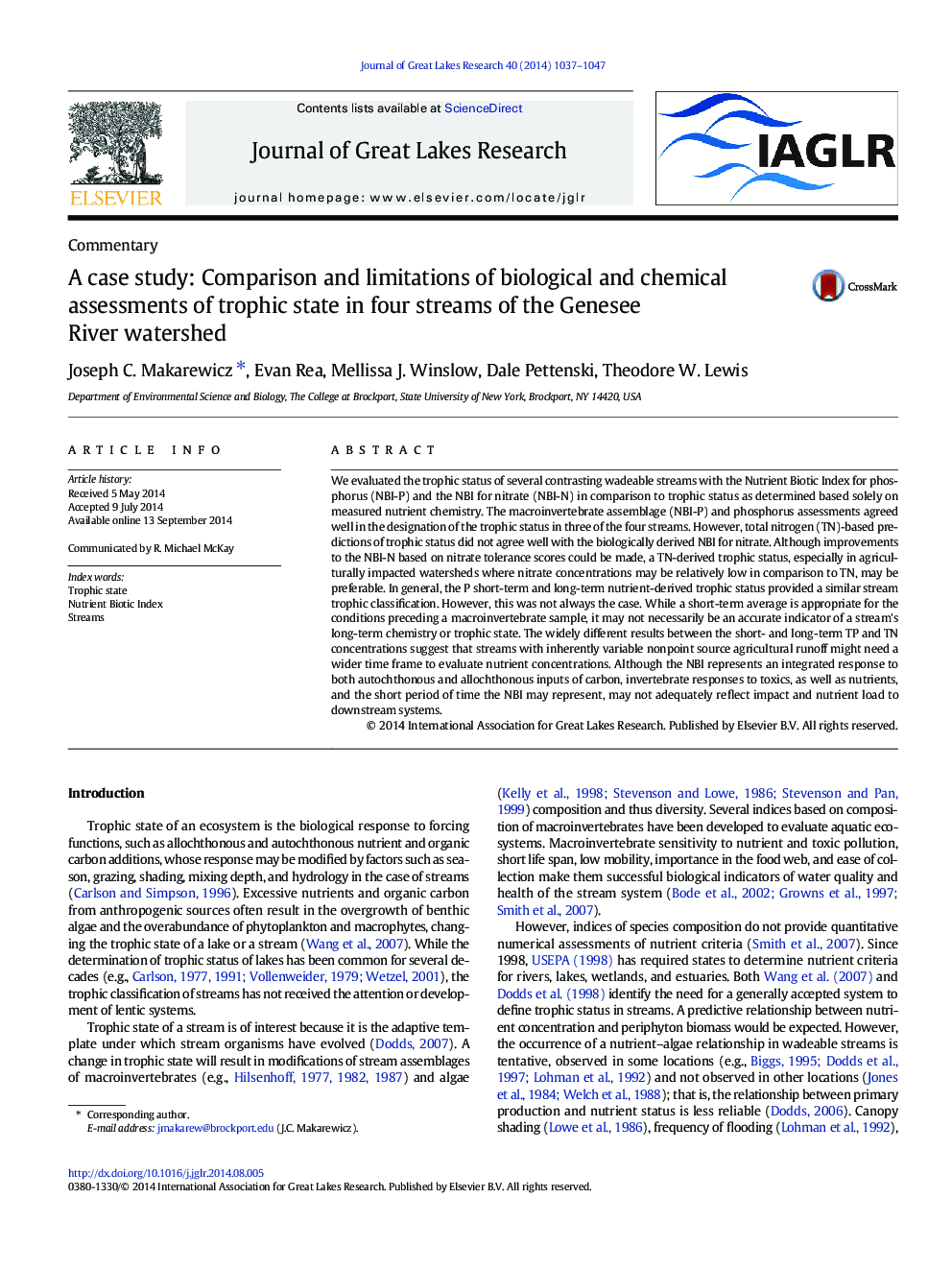| Article ID | Journal | Published Year | Pages | File Type |
|---|---|---|---|---|
| 6305123 | Journal of Great Lakes Research | 2014 | 11 Pages |
Abstract
We evaluated the trophic status of several contrasting wadeable streams with the Nutrient Biotic Index for phosphorus (NBI-P) and the NBI for nitrate (NBI-N) in comparison to trophic status as determined based solely on measured nutrient chemistry. The macroinvertebrate assemblage (NBI-P) and phosphorus assessments agreed well in the designation of the trophic status in three of the four streams. However, total nitrogen (TN)-based predictions of trophic status did not agree well with the biologically derived NBI for nitrate. Although improvements to the NBI-N based on nitrate tolerance scores could be made, a TN-derived trophic status, especially in agriculturally impacted watersheds where nitrate concentrations may be relatively low in comparison to TN, may be preferable. In general, the P short-term and long-term nutrient-derived trophic status provided a similar stream trophic classification. However, this was not always the case. While a short-term average is appropriate for the conditions preceding a macroinvertebrate sample, it may not necessarily be an accurate indicator of a stream's long-term chemistry or trophic state. The widely different results between the short- and long-term TP and TN concentrations suggest that streams with inherently variable nonpoint source agricultural runoff might need a wider time frame to evaluate nutrient concentrations. Although the NBI represents an integrated response to both autochthonous and allochthonous inputs of carbon, invertebrate responses to toxics, as well as nutrients, and the short period of time the NBI may represent, may not adequately reflect impact and nutrient load to downstream systems.
Keywords
Related Topics
Physical Sciences and Engineering
Earth and Planetary Sciences
Earth and Planetary Sciences (General)
Authors
Joseph C. Makarewicz, Evan Rea, Mellissa J. Winslow, Dale Pettenski, Theodore W. Lewis,
